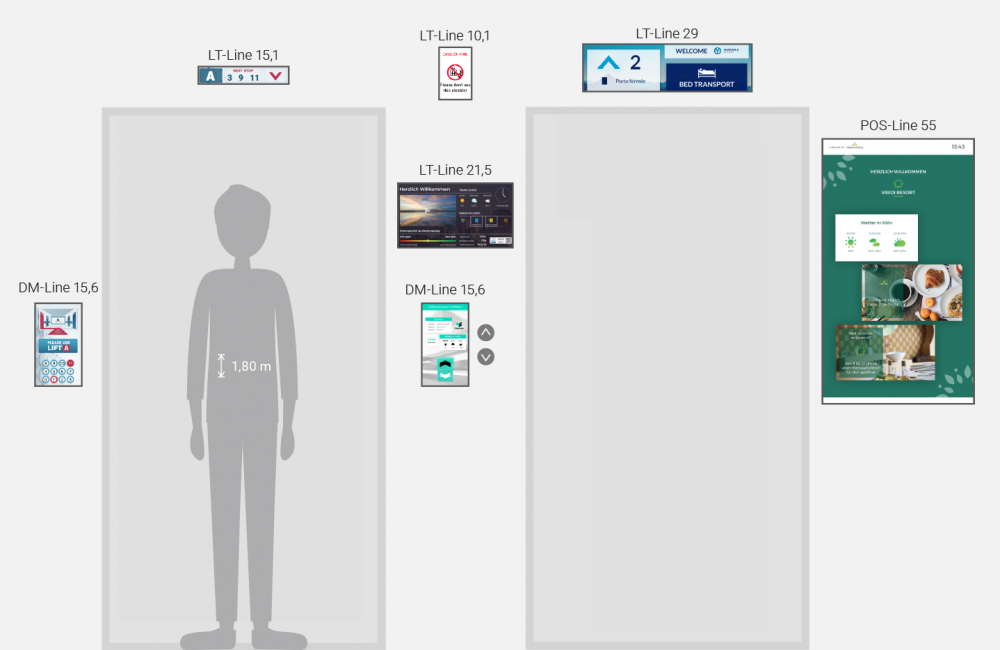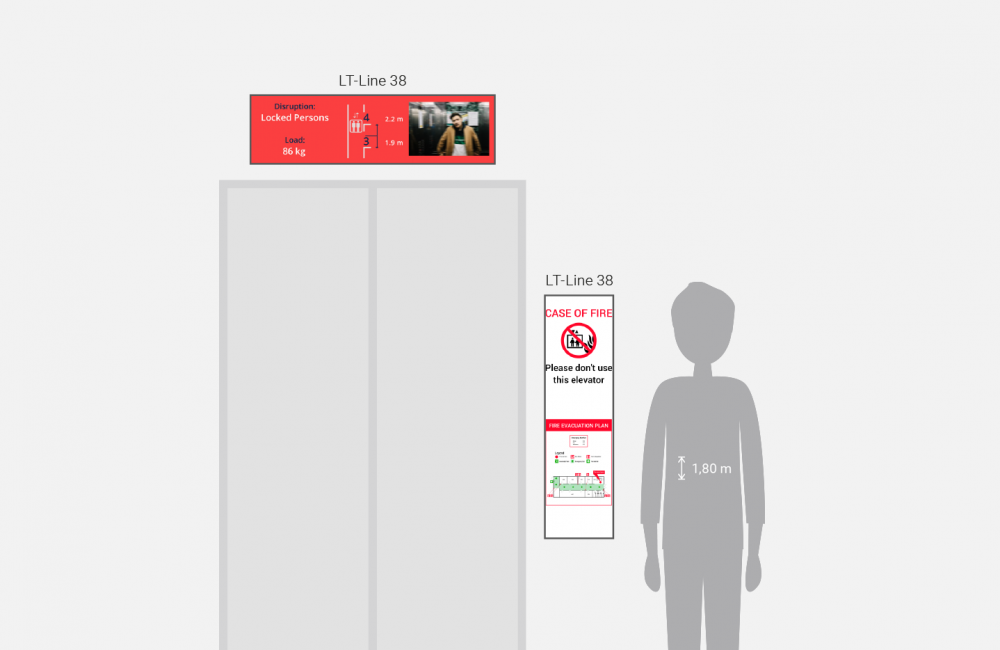On the floors, the flexyPage displays can display lift information like “continue to travel” and an unlimited number of special texts. The DM-Line Touch-Displays can also be used as a floor call button or as an input display for destination dispatch. In addition to use in elevators, the displays are often used for the presentation of tenant directories or for the presentation of building-specific advertising, which must be updated regularly. For surface mounting above the doors, suitable surface-mounted housings are available.

Special cases in the floors
The flexyPage displays are often displaying special signals in special cases, such as evacuation plans in the event of a fire, video streams and elevator location in the event of faults with trapped persons, information about imminent or ongoing maintenance.

Special cases
Even special cases can be shown by flexyPage displays. Here is an overview of these:
Even though the lift is maintained regularly, technical faults can occur. The cause can be e.g. the failure of a component or vandalism. Common displays will only show the information 'lift out of order'.
flexyPage displays can do more. They are connected to the field bus of the lift. Equipped with a position sensor or load sensor the floor displays can state that there has been a malfunction and show where the lift is currently located and whether there is any persons entrapped (see below under 'Entrappment of persons').
A lift needs to be maintained regularly to be able to ensure safety. For this the technician puts the lift into maintenance mode or for older models turns off the outside control from the halls. This way the lift cannot be used anymore.
Thanks to the connection to the lift, flexyPage displays register the maintenance situation and can directly let the users know - 'Lift in maintenance'.
Everybody knows the sign 'Do not use lift in the event of fire!'. However, this does not inform the user whether or not a fire occurred and how he should behave in such a case. Older displays from the field of digital signage, which have no connection to the lift or the building management, will keep displaying the programmed advertisements.
flexyPage displays know the state of the lift and can - depending on a fire signal - change the layout and inform the user not only about the event of a fire but at the same time show references on how to leave the building or an evacuation plan. A voice announcement can also support this visualisation acoustically.
In normal operation there can also be situations where the lift is available to the user only on a limited basis. This can be e.g. a priority ride or a bed transport in a hospital. If the waiting user is not informed about these circumstances, it will appear as if the lift just rides past him without recognising his request. The user will think that the lift doesn't work well or is faulty and he will be frustrated.
flexyPage displays can show numerous special texts. Many of these are already pre-defined, others can be defined freely. This way the user might not get to his destination faster, but he can see why the lift does not stop for him. This reduces frustration and vandalism.
There can be many reasons for a lift with people inside to stop between two floors. This can be a power interruption (very rare), the failure of a component or the triggering of a safety component. Being entrapped in an elevator is not dangerous, but for many people very unpleasant. Thus, they should be freed as quickly as possible.
In all modern lifts an emergency call system is installed, with which 24 hours a day, 365 days a year an emergency call centre can be reached. They will initiate the release of entrapped persons immediately. Regardless of whether this will be conducted by an external service provider or a lift technician from the building, it is always helpful to know where the lift with the people is currently located.
flexyPage displays offer the possibility to display the position and weight of the cabin in case of a malfunction. For this to work, the sensor data of a position and load sensor is required.>
Are the displays connected to the internet, this information can also be provided online.
